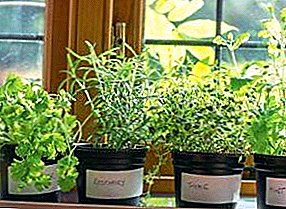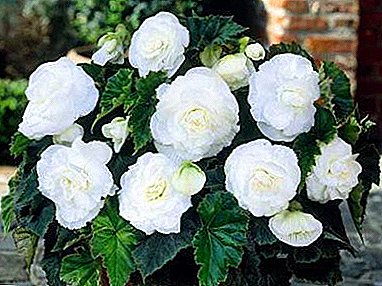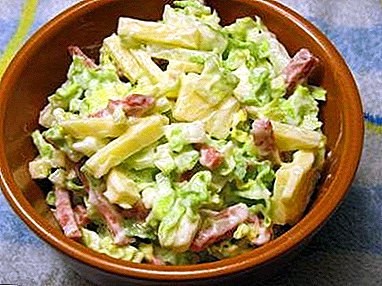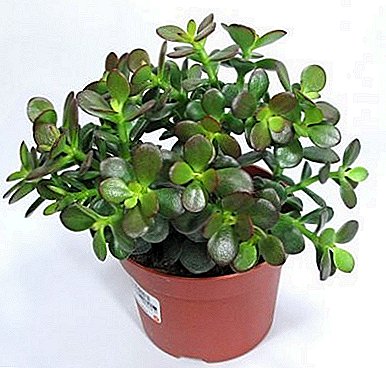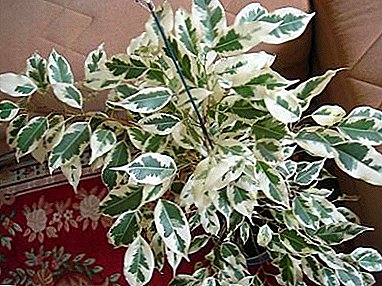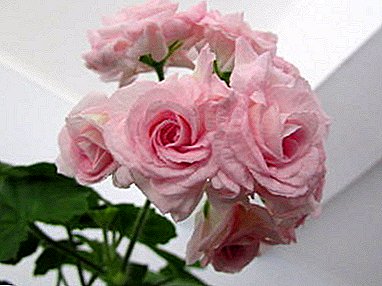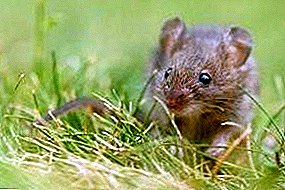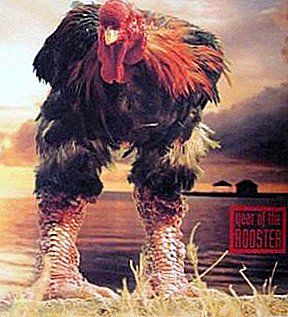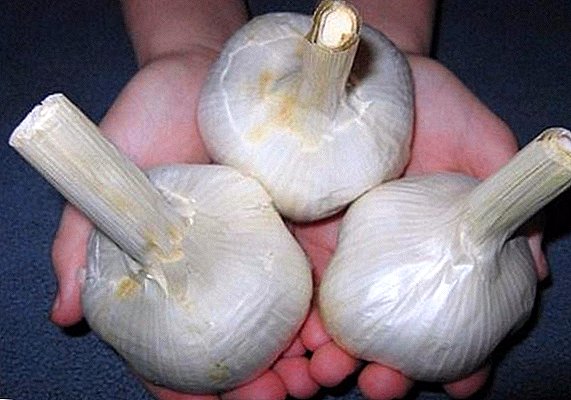 Rokambol or hair bow is grown in many countries of the world. In the post-Soviet space, culture has been known relatively recently - from the 19th century. What kind of vegetable is this, what is useful, and how to grow it - we will discuss in this article.
Rokambol or hair bow is grown in many countries of the world. In the post-Soviet space, culture has been known relatively recently - from the 19th century. What kind of vegetable is this, what is useful, and how to grow it - we will discuss in this article.
Rocambol: what is it
Rokambol is a plant close to onions and garlic, it represents this family. Externally, the plant looks like leeks, and its teeth are like garlic ones. Rokambool tastes much softer both crops, so people who for some reason are not garlic can replace it with this vegetable.
Difference from ordinary garlic is also the formation of one clove instead of a head with a lot of cloves. Crop culture - with proper care, the amount of the crop will surprise experienced gardeners: about 4 kg from a square meter, with a tooth weight up to 200 g

The choice of place and the role of predecessors
When growing, rocambol loves fertile areas illuminated and warmed by the sun. For growing crops, it is important that the soil be loosetherefore, the siderata plants are considered the best predecessors: rapeseed, alfalfa, lupine, rye. In the garden, onion-garlic grows well after squash, cucumbers, cabbage or legumes.
Important! You can not plant a plant after related crops - onions and garlic, as well as after potatoes.
Selection of planting material
For planting, whole, without visible damage and stains, teeth from whole bulbs are selected. The material is sorted by size in order to more rationally be distributed among the beds, cleaned from excess husk. 24 hours before planting, seed is soaked in a weak pink manganese solution.
Did you know? According to many reports, the Rokambol from the Balkan Peninsula, it is thanks to immigrants from Europe that the culture has become widespread in both Americas and very popular among the locals of the continents. From Peru, for example, 35% of the world crop share is shipped to different countries.

Preparing the soil for planting onion-garlic
Under the planting of a rocambol, according to the rules of its agrotechnology, soils with an acidity index of 6.5-7.5 are desirable, if necessary, the soil is deoxidized with dolomite flour or lime. Soil should be nutritious: per square meter contribute compost or manure from 25 to 40 kg.
The onion family also represents: onions, onions, batun, Viper, onions, Indian onions, onions, shallots, onions, chives.
In the case of loamy soil, sand and peat should be added. Dense soil is loosened to a depth of 30 cm, in other cases, the depth of loosening is up to 10 cm. There should be no stones, vegetation residues or manure on the surface of the soil: this will make it difficult to plant.

Landing Process: Distances and Landing Depth
The time when it is best to plant rokambol - spring and autumn. Spring is planted as early as possible: at low temperatures, the culture is better rooted. Seed material is planted to a depth of 10 cm, a distance of up to 15 cm is maintained between the teeth, and 30 cm between the rows of planting.
Regardless of the time of planting, the soil is mulched to keep warm and moisture, because in the winter period, the teeth without shelter will be frozen and will not germinate. As a mulch use any available material: straw, sawdust, peat; Layer up to 5 cm.
Did you know? In the US, the annual food festival is held in the town of Gilroy, the main participant of which is the rokambol. Dozens of field kitchens with the best chefs of the states, various exhibitions and concerts, wine tasting, games and even a mini-zoo for children are waiting for the holiday guests.

Care and cultivation of garlic onions in the garden
Care culture is simple: the plant has long adapted to the conditions of our climate. The basics of care - watering, fertilizing and caring for the soil.
Watering, weeding and loosening
Rokambol during planting deepens in moist land, and in the further care he needs regular and abundant watering. During the period of active growth, watering is carried out twice a week to 12 liters per square meter. Further, the frequency depends on the regularity of precipitation and drying of the soil.
Important! The plant needs weeding, weeds must be removed so that they do not draw moisture and nutrients.
Loosening the soil is carried out very carefully, until the plant is rooted and strengthened, so as not to damage the fragile roots. This procedure helps the air to penetrate deep into the soil, feeding the root system, improves the distribution of moisture.

Top dressing and mulching of the soil
On average, the plant is fertilized around three times:
- The first feeding is carried out before the appearance of sprouts: 20 g of ammonium nitrate per square meter, nitrogen fertilizers contribute to the good development and the formation of green mass.
- The second time fertilized in the phase of active growth: make 200 g of bird droppings, 20 g of urea per 10 liters of water (per square meter - 3 liters).
- During the period of the formation of the fetus, phosphorus-potassium supplements are applied: up to 5 liters of solution per meter (200 liters of wood ash per 10 liters of water).

Harvesting and storage of the crop
The signal for harvesting is the yellowed lower leaves of elephant garlic. If you miss the deadline, the protective upper husk will fly around, and the teeth will crack, in addition, later cleaning threatens with the development of rot.
Fruits are dug, shaken off sticking earth and laid out on the stack to dry. The foliage is not immediately cut, so that its juices are transferred to the teeth: this increases the shelf life. Dry the crop under a canopy, from the active sun, the fruits shrivel and dry.
Important! If an attic or other room is selected for drying, it is important that it is ventilated.
The drying process lasts about a month, then the foliage is cut, leaving a small tail. Until spring, the harvest can be stored at a temperature not higher than 9 ° C.

Useful Properties of the Rockball
The benefits of garlic are appreciated in official medicine and pharmacology. On the basis of the vegetable produce preparations of antibacterial, antiviral properties; ointment for burns and bruises, hematomas; remedies for the treatment of intestinal diseases and many others.
You can plant watercress, radishes, strawberries, tomatoes and parsley near the rocamball.
Rokambol benefits in gastric diseases, strengthens the immune system, has a beneficial effect on blood vessels, as a prophylactic against thrombosis.
Allicin in the composition of the plant acts as an antioxidant, ascorbic acid - as an antiviral agent; germanium is responsible for the elasticity of blood vessels and capillaries; sulfides help destroy fungal infections, phytoncides - viruses; essential oils are effective against the common cold.

Active nutrients in the plant have anthelmintic, antiseptic properties, remove toxins from the body, prevent the formation of cholesterol plaques, increase immunity, improve digestion and normalize the bowels. It is a source of iron, which means it is useful for anemia and low hemoglobin.
In folk medicine, among other things, the vegetable is used in the treatment of skin diseases: ulcers, ulcers, etc.
Growing garlic onions does not require any special knowledge or effort, and its taste and beneficial properties for the body clearly overshadow the possible difficulties of caring for the plant.


